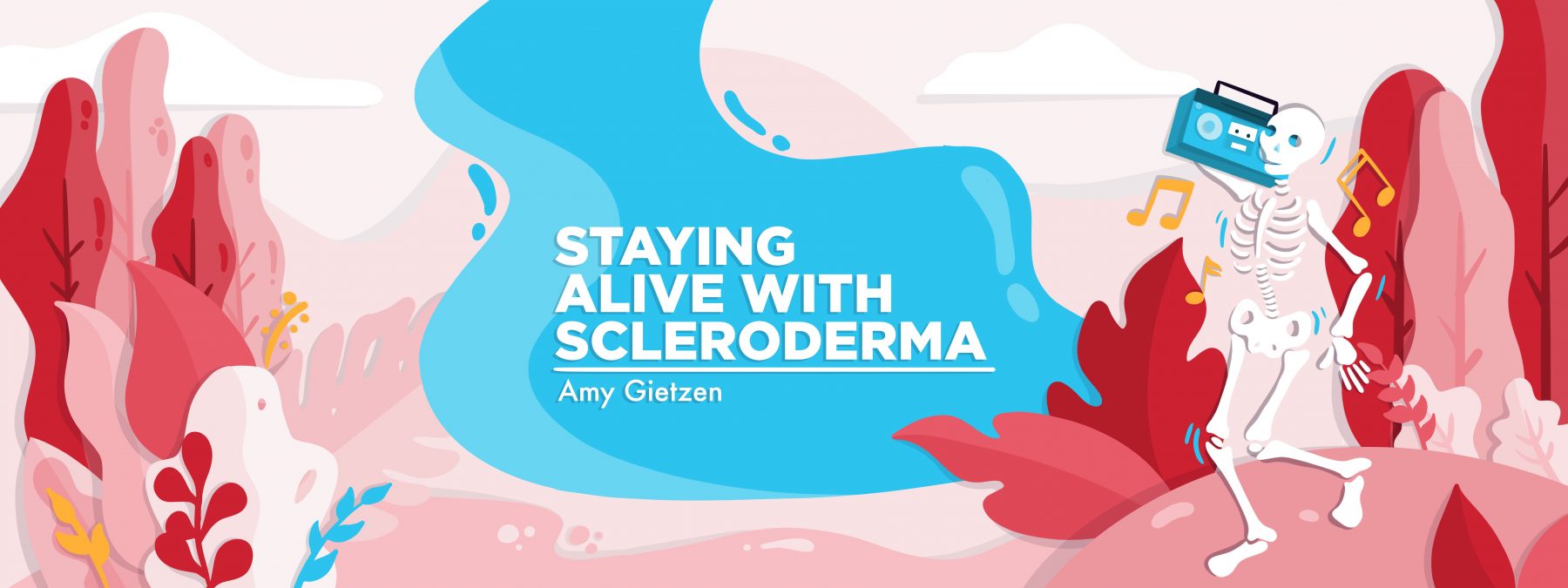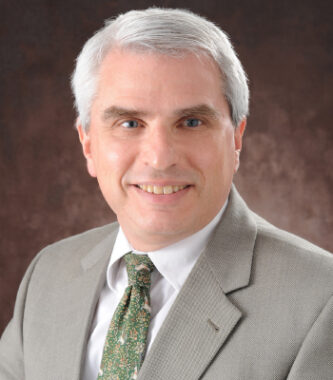How patients are educating future health professionals on scleroderma
Dr. Lee Shapiro, CMO of the Steffens Scleroderma Foundation, shares his insight

In 2018, I was asked to be a keynote speaker at an interprofessional education event (IPE) that aimed to educate graduate students in various healthcare disciplines about scleroderma. I’m a patient advocate who’s lived with the disease for more than two decades, and I pride myself on spreading awareness and educating the public, so I gladly accepted.
The event was sponsored in part by the Steffens Scleroderma Foundation, a nonprofit whose mission is to support research toward the treatment and cure of scleroderma and to promote greater understanding of the disease, especially among healthcare professionals. It’s also where I met Dr. Lee Shapiro, a prominent rheumatologist and the foundation’s chief medical officer.
I’ve long admired Shapiro’s passion and dedication to the scleroderma community, so I recently reached out to him via email for an interview. Excerpts of our conversation follow, with light editing for clarity.

Dr. Lee Shapiro, chief medical officer and founder of the Steffens Scleroderma Foundation. (Courtesy of Lee Shapiro)
AG: How was the Steffens Foundation created?
LS: In 2010, at the Capital District Scleroderma Foundation walk [in Albany, New York], Helen Polenz, whose daughter, Ann Steffens, had passed away from complications of scleroderma years before, handed me an envelope and said, “This is for your research.” On opening the envelope, I found a check for $50,000 made out to me personally.
I knew Helen well. I knew she was an active supporter of the [National] Scleroderma Foundation and a regular contributor to it. So I concluded she wanted me to do something different. After some time, I developed the idea of establishing a foundation in honor of her daughter. I quickly recruited a 15-member board of directors to help shape a mission. We decided to focus on promoting awareness of scleroderma among all healthcare professionals, to focus on promoting the development of collaborative research projects, the collaborations between different medical specialties and health professionals, and developing these locally, nationally, and internationally.
How and why was IPE created?
The IPE was the brainstorm of two of our original board members. They wanted to pursue our educational mission. They were invited to an interprofessional education event in Albany on ALS (amyotrophic lateral sclerosis) and immediately knew that the format would work well to educate health professional students, making them aware of scleroderma, the multiple ways the disease could be life-altering, and the need for a team approach in treatment.
How do you prepare patients to be educators?
I have found that it is easy to interest patients in being educators. Most patients, given the opportunity, wish to share their stories. They want to do as much as possible to make healthcare providers familiar with scleroderma. But even those with much to say need a little guidance at first in how to guide a group conversation, keep it going, and engage every student at the table.
They need encouragement and reassurance that their stories are powerful and meaningful. These needs have been met wonderfully by the “Art of Advocacy” sessions that our keynote speakers and IPE moderators, each an articulate individual with scleroderma, jointly developed.
How have you seen IPE grow over the years?
It has involved more than 200 health professional students and 25 to 30 patient educators each year. We have educated more than 1,000 health professional students to date. We have survived and thrived during the pandemic by switching to a remote format so all participants could join from their homes.
This has enabled us to include individuals with scleroderma from distant states, and students from distant institutions. The remote format has enabled us to include individuals with mobility issues who may have found it impossible to travel to participate in our in-person programs.
Over time, we have also been able to engage more health professions, including dentistry students this year for the first time, joining pharmacy, medicine, nursing, nutrition, counseling, public health, occupational, and physical therapy students.
What is next for the Steffens Foundation, since you seem to have perfected the scleroderma IPE?
The program is far from perfect, but we know it has an incredibly positive impact on the patient as well as student participants. We are refining the tools we employ to measure the impact of the event.
We also hope to encourage students to follow up the IPE by becoming engaged in scleroderma-related research, no matter their discipline. There is nothing like our IPE at any scleroderma center in this country or abroad. So our focus now is on making our IPE format well known in the scleroderma community, and encouraging and assisting the development of IPEs at other scleroderma centers around the country and, eventually, in Canada and abroad.
How can people get involved with the foundation or IPEs?
Details about our mission, the IPE, and other projects, including the development of an e-book, which details all the steps in creating a scleroderma IPE, can be found at our website.
What are you proudest of regarding the foundation?
I am proud of how much we have accomplished, in education, in developing collaborations, of how we empower our patient educators, that we have a model of education that has generated interest all over the country, and I can’t wait to see its implementation at many other centers. I am proud of the impact we have had.
Note: Scleroderma News is strictly a news and information website about the disease. It does not provide medical advice, diagnosis, or treatment. This content is not intended to be a substitute for professional medical advice, diagnosis, or treatment. Always seek the advice of your physician or other qualified health provider with any questions you may have regarding a medical condition. Never disregard professional medical advice or delay in seeking it because of something you have read on this website. The opinions expressed in this column are not those of Scleroderma News or its parent company, Bionews, and are intended to spark discussion about issues pertaining to scleroderma.








Betsy Replogle
Since 2000 I have had the honor and great pleasure of getting to tell the 2nd year medical students at the University of Oklahoma School of Medicine about my experiences as a dssc patient. Every year the school has an afternoon Rheumatology Workshop where patients with their rheumatologists meet with a series of small groups of students. The small groups allow the students to meet actual patients and ask questions while giving patients the opportunities to tell how their diseases have affected their lives--information that is not included in textbooks.
After 25 years of symptoms I was finally diagnosed in 1984; at that time there was little hope for patients as sick as I was. Now I tell the future doctors that I have gotten much, much better and that hope and a positive attitude are significant parts of medicine.
Today I am concerned about the minimal scleroderma education of the "gatekeepers"--the PAs and nurses patients have to get through to see a rheumatologist. I hope this problem will be addressed soon.
Mia Steel
OH MY GOSH, Praise God! It’s so hard to find articles, websites, etc. I’’m so excited to be with SB on FB, which is how I found you. CONGRATS Amy for taking such a big roll !!! YES to Betsy & Cindy, RIGHT! It’s hard to tell others & when you do, sometimes they look at you sideways & carry on with some other convo. Mention to same peeps/others, at some point they here you. The Q come, you don’t look sick, you’ve always had so much energy, maybe you’re just depressed, need to loose weight, on & on …. THANKS GIRLS!!!